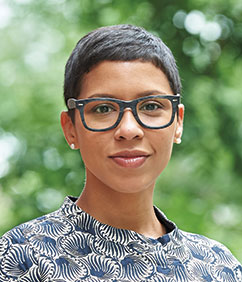What’s next at the Supreme Court?
On September 27, at an NYU Law Forum sponsored by Latham & Watkins, experts looked back at the US Supreme Court’s most recent term and ahead to its new docket, which includes potentially momentous cases involving voting rights and deference to federal agencies. They also debated how the justices might approach widespread calls for ethical reforms within the Supreme Court.
Moderator Melissa Murray, Frederick I. and Grace Stokes Professor of Law, began the discussion by asking her fellow panelists for their thoughts on the Court’s 6-3 conservative supermajority. Melissa Arbus Sherry, a Latham & Watkins partner and member of the firm’s Supreme Court and Appellate Practice, characterized the conservative bloc as “a powerful supermajority, but not entirely monolithic.” Sherry pointed to decisions such as Moore v. Harper, in which the justices ruled that state legislatures can be subject to state court review and state constitutions when establishing state election laws for federal elections, and Allen v. Milligan, where the Court ruled that Alabama’s congressional districts are discriminatory toward Black voters. With the exception of Justice Samuel Alito, Sherry observed, all of the conservative justices had joined the liberal minority at some point in the last term.
The panelists agreed that Justice Ketanji Brown Jackson had made an unusually strong mark in her freshman year at the Court. Abbie VanSickle, the New York Times Supreme Court correspondent, invoked the sharp back-and-forth between Jackson and fellow Black justice Clarence Thomas in their diverging written opinions in the affirmative action case. “She’s kind of pushing against his voice, and even though it is a majority conservative Court, I think she’s really making her presence known,” VanSickle said. Outside of the Supreme Court, VanSickle added, Jackson’s choice of public appearances—such as her keynote speech at the 60th anniversary commemoration of the Sixteenth Street Baptist Church bombing in Birmingham, Alabama—set her apart from her colleagues.
Professor Ilya Somin of George Mason University’s Antonin Scalia Law School suggested that Jackson is more of a civil libertarian than her predecessor, Justice Stephen Breyer. “While in the short run, that may have only a modest impact, she’s going to be on the Court for many years,” said Somin. “The structure of the balance of power on the Court might change, and so she might be a more important swing voter on some of these issues in the future, even if she is not yet now.” Both Somin and Murray also pointed out Jackson’s employment of originalist arguments in a progressive context, subverting the more typically conservative use of that ideology.
The failure of some justices to disclose the receipt of valuable gifts has dominated recent news cycles. Why, Murray asked, had it taken a ProPublica exposé to bring this longstanding issue to light for the broader public?
“Even before that piece,” said VanSickle, “there had been a sense—maybe post-Dobbs [v. Women’s Health Organization]—a view for journalists to expand the way that we think about reporting on the Supreme Court, that rather than a focus on just the decisions, the oral arguments, the cases themselves, that looking at the ecosystem around the Court was also really essential to understanding the Court, in the way that you would cover Congress or the presidency. So I think there’s been a shift that started before ProPublica, but they’ve certainly done really incredible work.”
Sherry suggested that the justices wanted to self-police rather than be subject to oversight, “but in order to self-police they have to agree on something,” she said. “There’s nine justices on the Court. My guess is they don’t all necessarily agree on what the right answer is here.” She also drew a distinction between the Supreme Court and the rest of the federal judiciary, arguing that recusal is more straightforward in lower courts because other judges can take the place of those recusing.
Turning to the upcoming term, Murray cited the spate of “blockbuster” cases over the last two terms and said, “This term may not garner the same kind of headlines because the cases are really technical and in the weeds and aren’t the sort of hot-button issues that mainstream media might cover, but they’re really consequential.”
Among the pending cases, the panel noted, is Loper Bright Enterprises v. Raimondo, in which the Court would consider whether to overturn the Chevron doctrine. This precedent has compelled federal courts to defer to a federal agency’s interpretation of a Congressional statute that appears ambiguous. While the topic is arcane to many, conservative groups, who have increasingly opposed the power of agencies in recent years, are watching the case closely.
The panel also considered United States v. Rahimi, which involves a federal law prohibiting someone with a civil domestic violence restraining order from possessing a firearm; Alexander v. South Carolina State Conference of the NAACP, a racial gerrymandering case; and the appeal of the Northern District of Texas ruling that overturned the US Food and Drug Administration’s 2000 approval of mifepristone, for which the Supreme Court has not yet agreed to hear the case.
If the mifepristone case does go before the Supreme Court, Murray said, it would be the first significant abortion challenge the justices will hear since Dobbs: “This is going to be where a lot of the attention is, and this will be a very media-savvy term after all.”
Posted October 6, 2023


